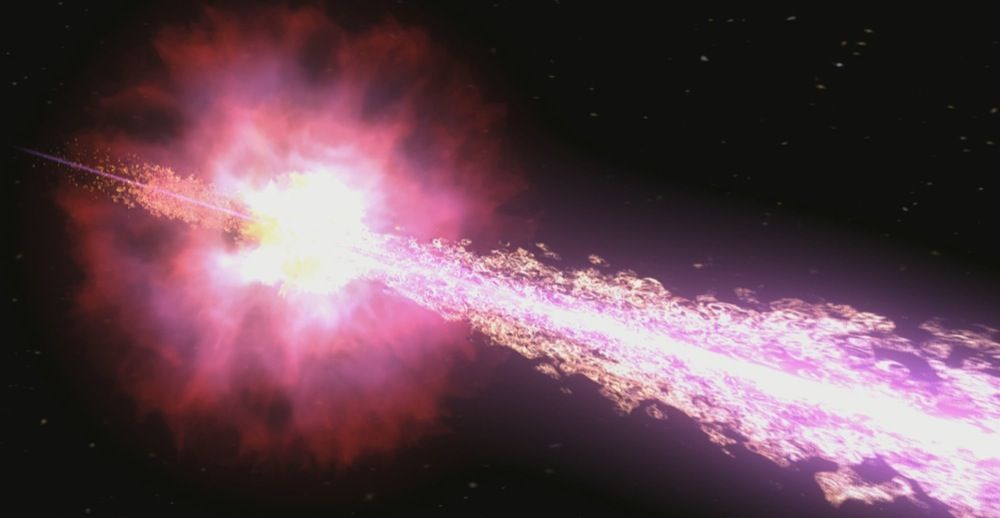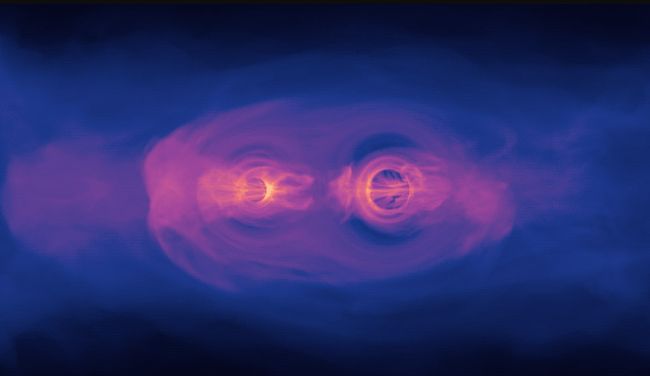Could These Black Hole ‘Morsels’ Finally Confirm Stephen Hawking’s Famous Theory?
In his own words, Stephen Hawking noted that everything has its time, including black holes. The scientists might possess a way of proving it for the first time.
The most important thing, which the great Stephen Hawking handed to humanity, was the fact that there is nothing eternal in the world, which scientists are ready to prove at last.
This idea was conveyed by what was arguably Hawking’s most important work: the conceptual model that they release thermal radiation and thus fade away through the process of evaporation at the end of their life cycle. This was later named ‘Hawking radiation’ in honor of the great scientist. .It is for this reason, that to this very day, it still exists as nothing but a theoretical model that goes unnoticed. However, thanks to human intelligence, some scientists believe that this may at last be within their reach; perhaps we will be able to proceed toward confirming Hawking radiation as a reality.
Therefore, the team thinks that when the bigger black holes partner and merge, the small and hot ‘bites of’ black holes might be thrown into space, and that could be it.
First and foremost, Hawking had stated that the smaller the black hole is, the quicker it would radiate Hawking radiation. Thus, such supermassive black holes with masses millions or billions of time that of the sun would take longer time than the age of the universe itself to fully ‘leak. ’ But how would one even measure such amidst astoundingly large time scales of leakage?Well, maybe we can’t — but when it comes to these asteroid-mass black hole appetizers named Bocconcini di Buchi Neri in Italy, there could be something else.
If these are truly black holes that are the size of a proton, they might evaporate and blow up on a scale that can be measured within the human lifespan. Moreover, the team adds that there should be a certain signature when these black holes die, indicating deflation due to Hawking radiation leakage.
“Hawking postulated that black holes actually shrink and give off particles”, the author of this idea and a student at the comprehension University of Denmark said to space. com. So, we wanted to know this, and the observational consequences of creating many Black hole bons bons, or Bocconcini di Buchi Neri that we visualized could be formed in the mergers of two astrophysical black holes.
Morsel black holes can’t keep their cool
The concept of Hawking radiation can be traced back to a letter written by Hawking in 1974 titled “Black hole explosions?” and presented in the scientific journal Nature. The letter was conceived when Hawking reflected on the clash between quantum mechanics and the black hole formalism, which are objects related to Einstein’s general relativity. This was interesting as quantum theory and general relativity are two such theories that continue to defy merge till today.
Hawking radiation has remained a worrying and unidentified phenomenon over the fifty years now for somewhat two reasons — first of all, most black holes might not emit this thermal radiation all; secondly, if they do, it cannot be detected. Plus, in general black holes are very exotic objects and therefore difficult to investigate.
“What is mind-bending is that black holes have temperatures that are inversely proportional to their mass,” Sannino explained, “So the more massive they are the colder they are and the less massive they are, then the hotter they are. ”
Cosmic microwave background radiation was discovered even in the vast areas of the universe where the temperature is as low as minus 454 degrees Fahrenheit (minus 270 degrees Celsius). This is due to a uniform field of radiation that still exists from shortly after the Big Bang and is known as the cosmic microwave background or CMB for short, it is also referred to as a ‘cosmic fossil’ as it is so incredibly ancient. Moreover, as per the second law of thermodynamics, heat cannot flow from a less hot source to the hotter source.
‘Black holes heavier than a few solar masses are stable because they are colder than the CMB,’ Sannino said. “Thus, it is thought that only the black holes that are relatively small can radiate Hawking radiation that could be observed. ”

Research author Giacomo Cacciapaglia of the French National Centre for Scientific Research said to Space. com that due to the fact most black holes in today’s universe are astrophysical black holes with masses having more than a few times that of the sun, they cannot emit Hawking radiation that is observable.
‘It turns out that only black holes lighter than the moon can radiate Hawking radiation,’ Cacciapaglia said, adding that this type of black hole may be produced and ejected during a black hole merger and start radiating right after its production. “Black hole morsels would be produced in large numbers in the vicinity of a black hole merger.
However, these black holes are too small to create effects that allow them to be imaged directly, like the Event Horizon Telescope has been doing for supermassive black holes by focusing on the glowing material that surrounds them.
The team recommends there is a special signal that can be employed to point to the presence of these morsel black holes. This would be in the form of a highly energetic explosion known as a gamma ray burst emerging from the vicinity of the sky where a black hole merger has been observed.

The researchers said that these Bocconcini di Buchi Neri black holes decay through Hawking radiation and go boom as they lose mass. Objects with masses of around 20,000 tons would take about 16 years to evaporate while examples of morsel black holes of at least 100,000 kilotons could last hundreds of years.
The disappearance and annihilation of the morsels would produce photons of energy beyond the TeV scale. To give some perspective of how energetic that is, Sannino has stated that the Large Hadron Collider (LHC) in Europe, which is the biggest particle accelerator in the world, accelerates protons to collide head on with a total energy of 13. 6 TeV.
However, the researchers do have an idea of how to search for these morsel black holes as they evaporate. First, black hole mergers could be detected because the massive objects emit gravitational waves, which are small waves in space-time as predicted by Einstein when merging.
Astronomers could then follow up on those mergers with gamma-ray telescopes such as the High-Altitude Water Cherenkov gamma-ray Observatory which has a capacity to detect photons with energies of between 100 Gigaelectron volts (GeV) and 100 Teraelectron volts (TeV).
The team agrees that it will still take sometime for observers to confirm the existence of morsel black holes and therefore Hawking radiation beyond any doubt.
“As this is a new idea, there is a lot of work to do. We plan to better model the Hawking radiation emission at high energies beyond the TeV scale, where our knowledge of particle physics becomes less certain, and this will involve experimental collaborations in searching for these unique signatures within their dataset,” Cacciapaglia concluded. “On a longer timeline, we plan to investigate in detail the production of morsels during catastrophic astrophysical events like black hole mergers.”
The team’s research is available as a pre-print paper on the repository arXiv.
Do not forget to share your opinion with us to provide you with the best posts !




0 Comments